EDITOR’S NOTE: We’ve selected the following article as one of our Men’s Health Greatest Hits, a story from the archives that represents the best in our brand’s history of reporting.
“Hit the Road Jacked!” originally appeared in the April 2014 issue of the magazine. Joe Kita conducted the reporting and Andrew Hetherington provided original photography.
MIDNIGHT ON THE Pennsylvania Turnpike. We’re hurtling west toward Springfield, Missouri, a thousand-mile haul, in a 500-horsepower freightliner towing 19 tons of dangerous cargo. Behind the wheel is Justin Boschee, a 6’5″ former offensive tackle at Eastern Oregon University, a born-again Christian, and a driver with more than 400,000 miles of unblemished experience. I’m hoping this trinity of muscle, messiah, and mileage will keep us safe.
“I found a driver dead once,” Boschee says offhandedly. “We were switching trailers. I knocked on his cab, but no one answered. He was dead. Young guy, too.” Then he grows pensive. A full moon and a constellation of dashboard lights create a comforting glow. “This is a great job. It pays well, and I love the freedom. But if you’re not careful, it can kill you.”
A 2014 survey of long-haul truck drivers by the National Institute for Occupational Safety and Health found that 69 percent were obese, 17 percent morbidly so. A Gallup-Healthways analysis revealed that transportation workers, including truckers, weigh the most and have the highest risk for chronic health problems of any occupational group. Considering the ramifications (heart attack, stroke, fatigue. . .), the 2.5 million trucks on U.S. roads just might be our biggest national safety threat.
Indeed, that dead driver Boschee found was diabetic, and the cargo in our trailer today is 38,000 pounds of Oreo Base Cake. The smell of those delectable wafer crumbs, which we both inhale deeply through the rear hatch, is metaphoric. It represents not only the daily temptation at Boschee’s back (he recently dropped 40 pounds) but also the monumental health challenge facing all men who travel for a living.
“I never had any concept of nutrition,” says Boschee, who used to fuel himself with eggnog and Cheetos while driving at least 11 hours a day. “Then at a truck stop in Dallas I saw my first 400-pound trucker. I couldn’t believe it. That’s when I realized if I didn’t change, that guy would be me.”
Plenty of initiatives are under way to help truckers get in better shape, including truck stop gyms and in-cab workout systems. But applying the brakes to a situation that’s been going downhill for decades is a slow process. Still, guys like Boschee are seeing results—and leading the way for others. If they can lose weight and build muscle in an environment that’s hostile to that effort, you can too. Let’s roll.
The 7 Rules Of On-The-Road Fitness
THE METABOLISM OF a typical long-haul truck driver over a 24-hour period is largely flat. Except for a few spikes when he may have been pumping diesel or walking into KFC, that driver could be dead.
“Most drivers I work with are sedentary almost 23 hours a day,” says Siphiwe Baleka, who’s a Yale grad, Ironman triathlete, Masters swimming champion, and former driver, and now the driver fitness coach at Prime Inc., a 5,400-truck firm, and Boschee’s employer.
What’s sobering is that you don’t need to be hauling cargo to have a metabolic profile like that. Cruising the Web all day from behind a desk expends no more energy than cruising the interstate.
Baleka’s job is daunting. Truckers have deadlines, so finding time to exercise or search for healthy food (which is like trying to find a shirt with sleeves at a truck stop) can be a challenge. But since he launched his 13-week driver health and fitness program at Prime in July 2012, Baleka reports that 131 drivers have graduated and lost an average of 19 pounds apiece. He says another 500 drivers who are not in the program but who’ve been influenced by his education efforts lost an average of 10 pounds each. Last summer he even staged a “Fittest of the Fleet” competition, in which Boschee finished second.
Baleka uses seven simple strategies to encourage results:
1. No matter what, exercise 15 minutes every day. It doesn’t have to happen in a gym, and you don’t need a formal plan.
2. Make each workout vigorous. “Maintain 75 to 85 percent of max heart rate,” explains Baleka, who did his Ironman training during a year when he drove 150,000 miles in 323 days. “This maximizes fat burning and, more important, your time.”
3. Work multiple muscle groups simultaneously. He gives drivers a list of 32 exercises they can combine for total-body workouts.
4. Always eat after working out. The latest research says 20 grams of fast-acting protein (for instance, whey isolate powder) eaten within 30 minutes of exercising is best for building muscle.
5. Eat breakfast, and then eat every three hours. This keeps hunger at bay and prevents bingeing late in the day.
6. Keep healthy snacks handy. When traveling, the tendency is to eat what’s available, so make only good food available.
7. Log your nutrition and fitness. Keeping a daily food and exercise journal makes weaknesses easy to spot. Baleka makes this simpler by giving every driver a Mio heart rate monitor and BodyMedia armband activity monitor.
So how does a guy implement these rules when his schedule changes daily and he’s at the mercy of the road?
The Truck Stop Workout (And Shower)
IT’S A RAW November morning at the TravelCenters of America truck stop in London, Ohio, just off I-70. Dressed in gym trunks and a bright-blue top, Boschee hops down from the cab and begins his workout.
He opens a compartment on the side of the truck, roots through greasy rags and tools, and pulls out a jump rope, resistance bands, and a dirty gray exercise mat. As he sets up, truckers in surrounding cabs swivel their heads his way. There are hundreds of rigs here, parked shoulder-to-shoulder and emitting a deep collective rumble, which I assume is coming from truck generators and not the drivers’ stomachs. Everyone is killing time until their federally mandated rest periods are over.
Despite not arriving until 2 a.m. and having to cope with my tossing in the bunk above him, Boschee looks fresh. He starts out with rope skipping, pushups, and jumping jacks. Next he dons an MMA harness he bought at Walmart. The built-in bands add resistance to his shadowboxing, which he does while he jogs. He takes off for a few laps around the parking lot just as a driver in sweatpants and flannel strolls by with two bags from Popeyes. (Among truckers, fried chicken is a breakfast food.)
Boschee’s workout showcases the spontaneity needed to stay fit on the road. Since he always has his fitness gear with him, he’s ready to exercise at a moment’s notice. “The unpredictability of my job is an advantage,” he says. “It keeps things fresh.”
It helps to be creative too. Driver Rodney McCloud, who won Prime’s Fittest of the Fleet competition, does forearm slams against the side of his trailer, knee kicks to the tires, and prone pullups and dips on the side of his rig.
And you can’t argue with his results. The 46-year-old McCloud weighs 222 pounds and has a 33-inch waist and 18 1/2-inch biceps. He carries a 300-pound set of weights in his cab. “Since I started driving in 2008,” says McCloud, “I’ve seen only one or two other truckers working out in the lot like I do. People look at you funny, but I don’t care. I work out in all kinds of weather, and when I’m waiting around at a shipper, I shadowbox, skip rope, or do pushups. You make it happen when you can.”
Boschee returns with steam rising off his broad shoulders. He does more rope-skipping and pushups, plus squats, burpees, crunches, bicycles, and mountain climbers. After 15 minutes of nonstop exercise—just as Baleka recommends—he’s back in the cab, toweling off and slugging a protein drink. “When I work out, I feel better and have more energy,” he says. “I’m a better driver because of it. Now what do you say we go grab a shower?”
Since the cab has no plumbing, I know what he’s suggesting—that we venture into the truck stop to scrub up. Now, let me state up front that hygiene is important to me and in no way am I ashamed of my Peterbilt. But the thought of stripping naked with this crowd has me shuddering like an 18-wheeler downshifting. “I got you a coupon for a free shower at my last fill-up,” he adds. “It’s normally $13.” I follow him past the greasy garage bays and up to the travel store checkout.
“Two showers,” says Boschee, as if he’s ordering a couple of tins of dip. “I have a coupon.” The checkout lady doesn’t bat a fake eyelash. She gives him two receipts and tells us to “have a super day.” After squeezing through the jerky aisle, we pass by the laundry room and the drivers’ lounge and come to a hallway lined with doors.
Boschee stops in front of one, punches in a code from the receipt, and says he’ll meet me back at the truck in 20 minutes. when I enter, I find a private room with brown faux-marble tiles, a contrasting orange towel set, and—what’s this?—a personal note.
It reads: Thank you for choosing TA London, OH. It is my goal to offer you the best shower experience I can. I personally cleaned and prepared this shower with you in mind. Please enjoy our many amenities, such as our two large towels, cloth bath mat, wash cloth and newly added 4-way adjustable shower head.—Debbie, Customer Service Attendant
There’s even a mint.
How Justin Lost His Load
WE HAVE 600 MILES to cover today to stay on schedule and reach Prime headquarters in Springfield by midnight. (People are evidently in desperate need of this Oreo Base Cake.)
When I return to the cab, gleaming like freshly polished chrome after my shower, Boschee is furiously punching numbers into two GPS units while consulting a well-thumbed road atlas. I assume he’s finalizing our route, but it’s actually something much more important than that.
“I’m looking for a Chipotle,” he says. “Found one! Just outside St. Louis, with a Walmart across the street for parking.”
So all day long, our high-tech instruments count down not to our final destination but to upscale fast food. “I like the Burrito Bowl with double meat,” he tells me a couple of times. That’s not a bad choice—it’s high in protein, and even the fats are on the healthy side. On a truck route that’s littered with junk-food road hazards, he could have broken down in any number of places.
While spontaneity is Boschee’s credo when it comes to exercise, meal planning is what has enabled him to drop 6 inches from his waistline in just seven months. He hits Walmart or Sam’s Club before every long trip, stocking up on water, Greek yogurt, vegetables, protein bars, fruit, and other healthy fare.
If he’s tempted by, say, gummy worms (“love ’em!”), he “delays gratification.” Instead of grabbing them impulsively, he finishes the rest of his shopping. If the craving hasn’t subsided, he buys them. He uses the same strategy at restaurants. Instead of immediately ordering two Egg McMuffins or burgers, he gets one, enjoys the hell out of it, waits a few minutes, and then decides if he really wants another. “I normally don’t,” he says.
Behind the wheel, Boschee sips water and snacks regularly. It’s all designed to lift his metabolism off that flatline, first with exercise and then with protein-rich foods that require extra energy to digest.
Out of all the adjustments Boschee has made, reducing processed carbs like cakes, sodas, and bread made the biggest difference, he says. “When you’re on the road, a lot of it is emotional eating,” he says. “You get bored or angry, and you eat. So I always try to have a plan and never have bad stuff on hand.”
Driven to Success
THE PART ABOUT the boredom is true. If you thought waiting around in airports was tedious, you should try watching asphalt for a living. Our cab is a state-of-the-art 2012 Freightliner Cascadia The seats are thronelike, and the truck comes loaded with technology—automatic deceleration if it gets too close to another vehicle or barrels into a curve too fast, plus a warning system that blares whenever we cross a lane line. We’re towing 19 tons of cargo, but it feels like there’s nothing behind us.
So how do you pass the time when you can no longer draw satisfaction from Cheetos, gummy worms, or even your own driving ability? In Boschee’s case, you pray and you think—a lot.
“In the Garden of Eden, the apple looked good to Adam and Eve, but when they ate it, it brought shame,” he says. “I’ve been the big fat guy my entire life. That’s how other people saw me, and that’s how I came to see myself. When you have a fat man’s mentality, you act like a fat man, eat like one, and dress like one. But when you think like a fit man, you feel fit and successful. I’m learning it’s much easier to resist the cravings and skip all that shame.”
Eventually we reach St. Louis. Boschee takes the designated exit, finds the Walmart lot, and parks. We sprint across four lanes of traffic to Chipotle, where he inhales a Burrito Bowl with double meat and I have a traditional burrito that must weigh 5 pounds. In less than 20 minutes, we’re back in the cab. He is extremely satisfied. I feel like there’s a bowling ball in my stomach, and I’m dreading the 200 miles we still have to cover.
But this is a trucker’s life. You’re not going to find these guys having a leisurely meal and then browsing the Cracker Barrel Old Country Store. Every mile in front of them is money waiting on the table. We take on fuel, whether for the truck or for ourselves, as quickly as possible. The job also makes meeting women and dating even more difficult. Boschee spends 350-plus nights a year on the road. He says he wants to start a family eventually but knows he’ll have to make significant changes to his schedule.
We finally reach Springfield at 10:03 p.m., gliding past the “Welcome Home” sign at Prime’s terminal just three minutes behind schedule. Boschee guides his rig into a multi-bay garage. When his paperwork is done, he drops the trailer, parks the cab, and escorts me into company headquarters. There is a new basketball court, gym, cafeteria, movie theater, post office, spa and salon, pool tables, and a store selling folding bikes and dumbbell sets. An adjacent room is filled with dispatchers and fuel-route planners who orchestrate Prime’s 6,200 drivers and 9,500 trailers. Hundreds of plaques line the walls, touting Prime’s Hall of Fame—drivers with a million or more accident-free miles.
“So how did it go?” asks Coach Baleka, who’s here to welcome us.
“You were right,” I reply. “It is possible to stay in shape out there.”
“It’s actually easier in some respects to eat healthy and exercise on the road,” says Baleka, ever the coach. “You don’t have the temptation of home cooking or the interference of family responsibilities. You can focus on what needs to be done.”
That’s the ultimate lesson: Take responsibility for yourself. “Everybody points at their circumstances when they really should be looking at themselves,” says Boschee. “When you start doing that, your life will change. I want the six-pack and the 18-inch biceps like everyone else, but it’s up to me to earn them.”

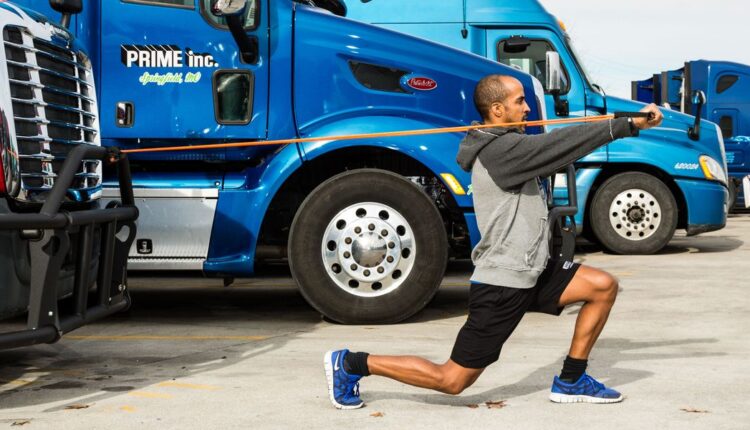

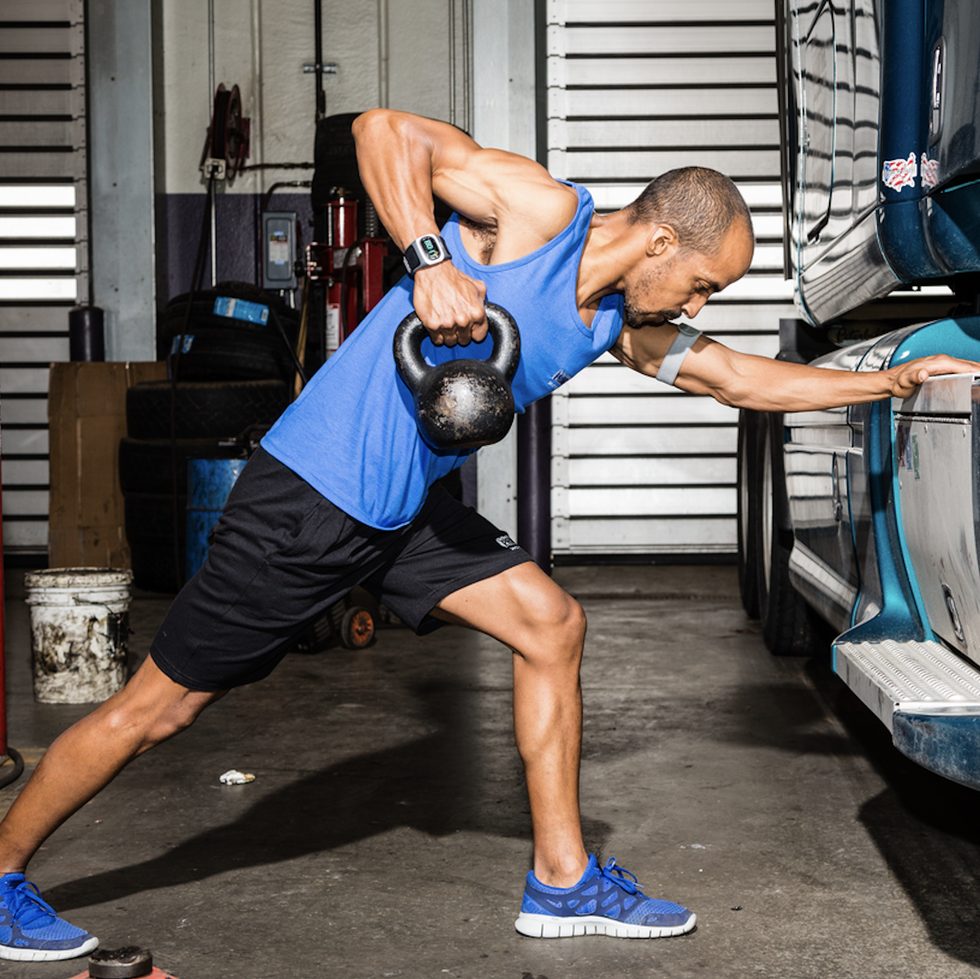
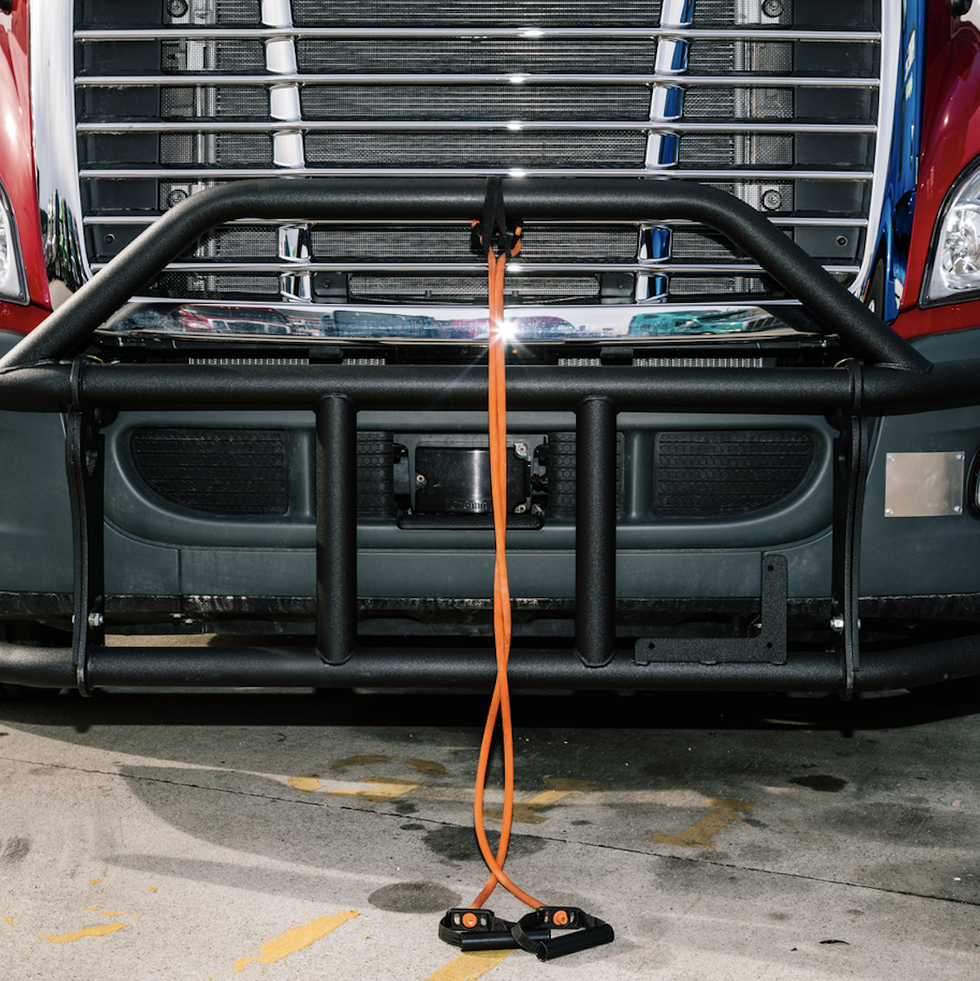
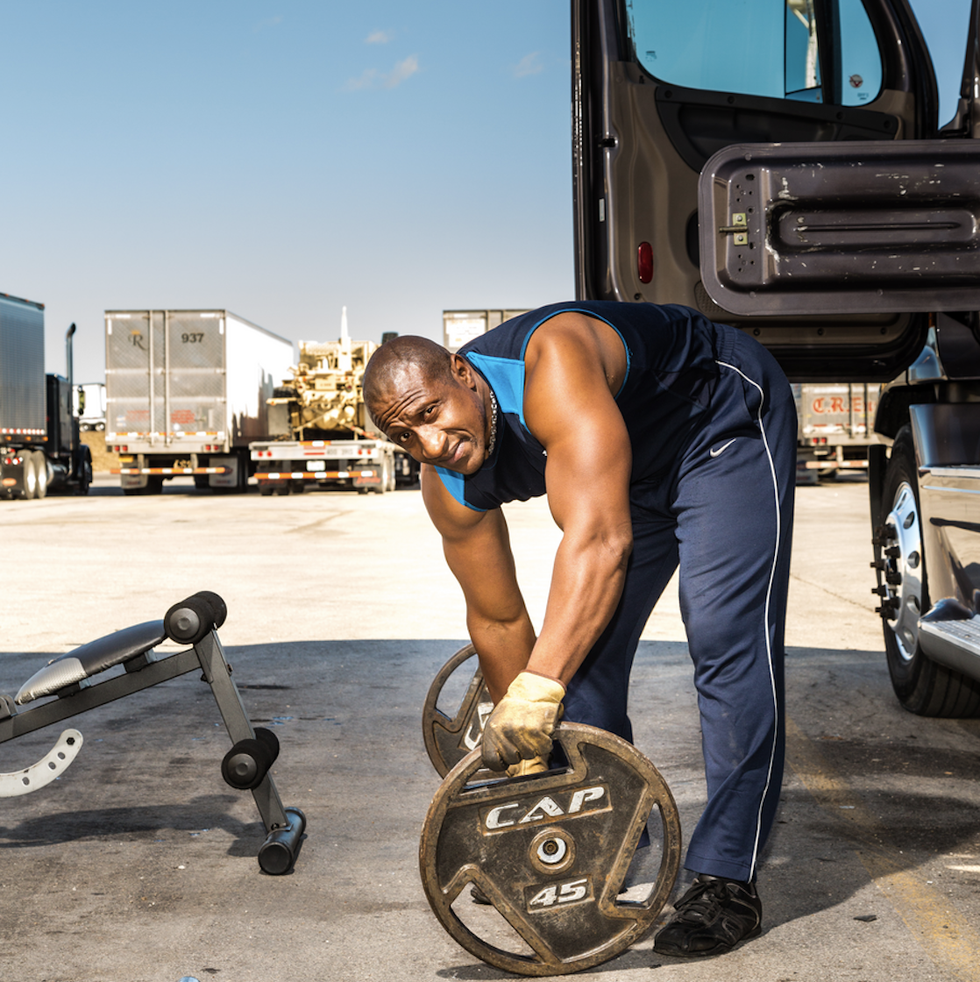

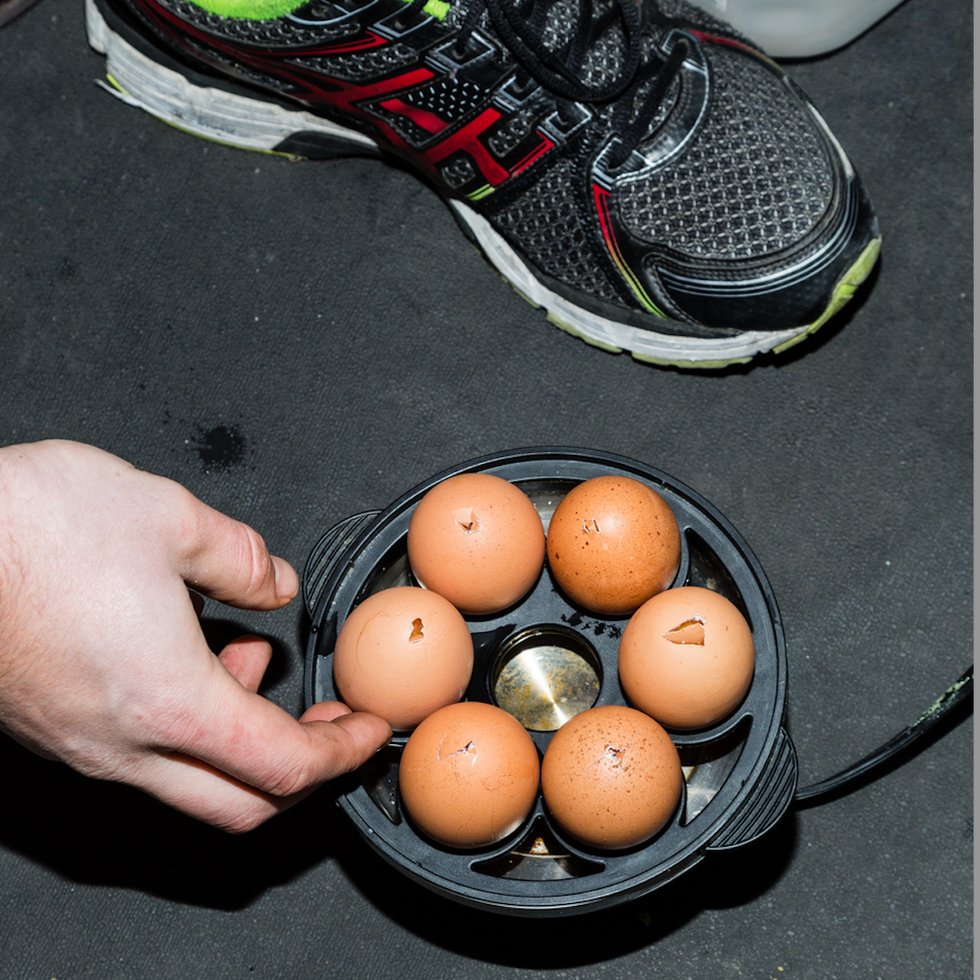
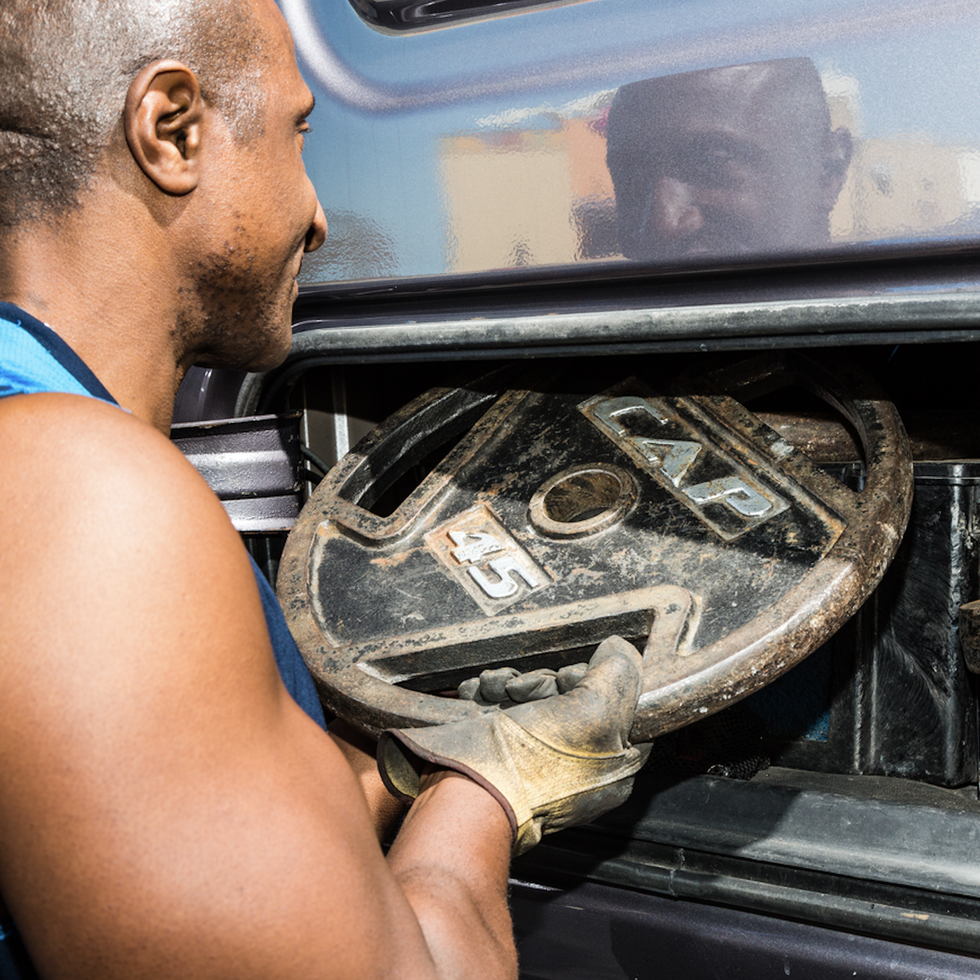
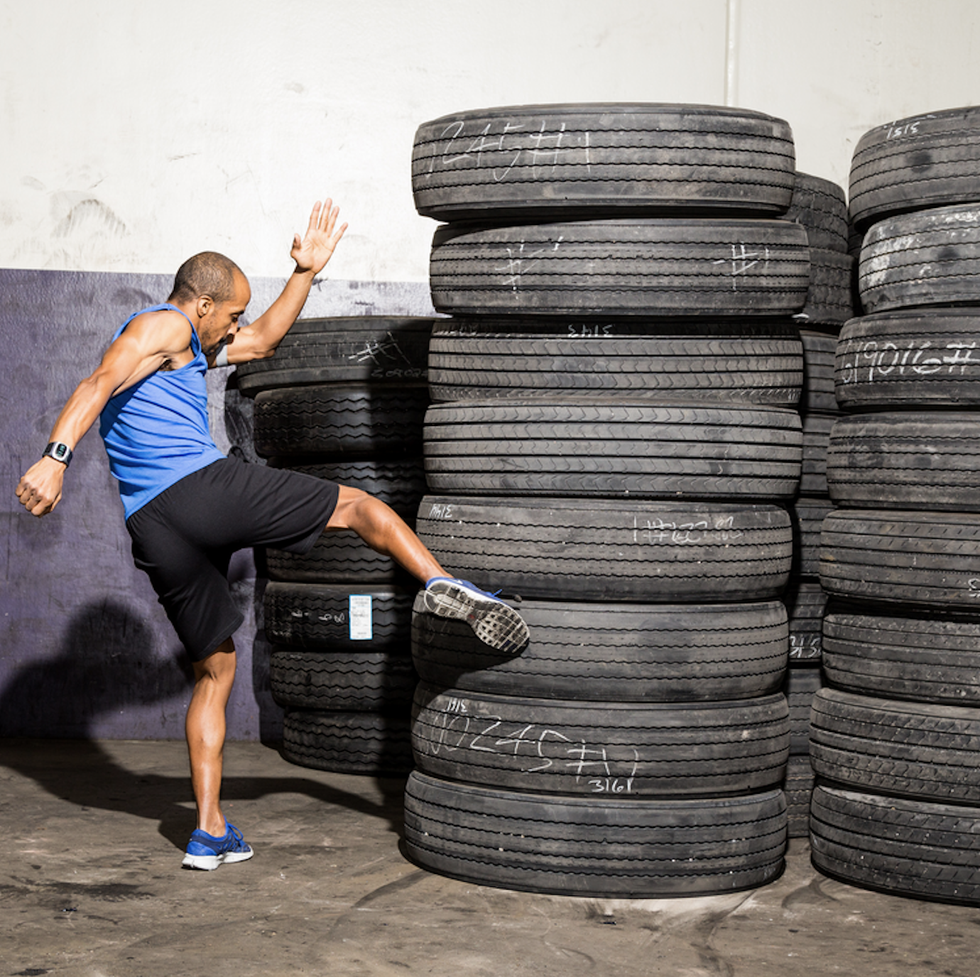
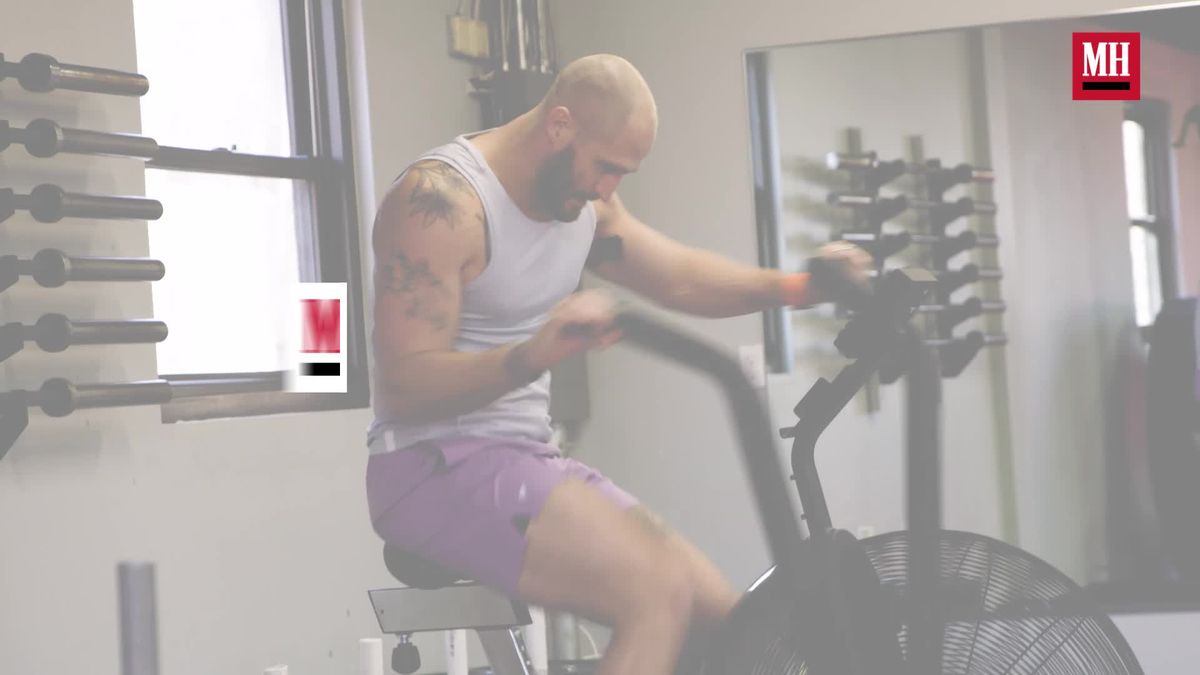
Comments are closed.